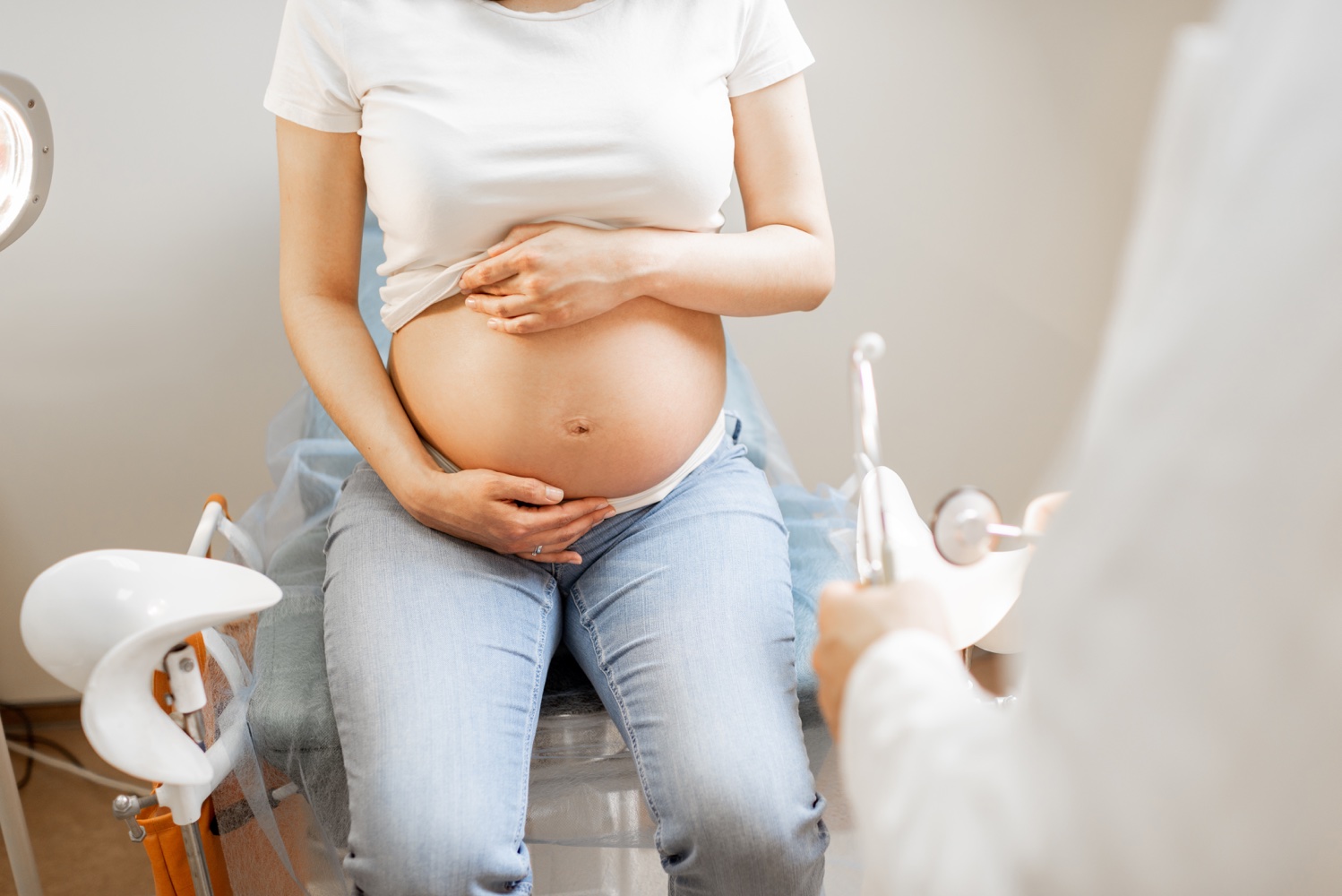The field of obstetrics and gynecology is the field where all health problems of women of all ages are examined. General routine controls in the field of obstetrics and gynecology, practices related to pregnancy (pregnancy follow-up, tests, etc.), diagnosis and treatment of all infections affecting women’s health, and cancers in the female reproductive system are carried out. Methods such as smear tests, ultrasonography, gynecological examination, and blood and urine analysis are often used in the examination of diseases in the field of women’s health and obstetrics.
Cervical Cancer

Cervical cancer is one of the most common types of cancer in women. At the beginning of the disease, abnormal cell formation is observed as the cells on the surface of the cervix, where the uterus opens to the vagina. When the abnormal cells that form are not noticed, they are likely to turn into cancer cells over time. There are two types of cervical cancer: adenocarcinoma and squamous cell carcinoma. Adenocarcinoma is a type of cancer that is more difficult to diagnose than squamous cell carcinoma.
Risk factors determined for cervical cancer are human papillomavirus (HPV), smoking, aging, multiple births, genetic predisposition, sexual intercourse with more than one person, diet, weak immune system, etc. can be listed as Human papillomavirus is the most common cause of cervical cancer. Human papillomavirus is mostly asymptomatic and has many types. Type 16 and type 18 human papillomavirus are the types most associated with cervical cancer.
The diagnosis of cervical cancer is often made incidentally in human papillomavirus and smear tests. For this reason, regular screening with smear and human papilloma tests can help prevent progression by detecting lesions that have not yet turned into cancer. The colposcopy method and biopsy are applied to individuals whose smear test results are considered suspicious.
Patients with cervical cancer apply to the clinic with complaints such as pain, smelly discharge, bleeding after sexual intercourse, or disruption in the menstrual cycle. In cases where cervical cancer progresses and metastasizes to distant tissues, symptoms such as back and low back pain, loss of appetite and weight, edema, fatigue, and weakness may occur.
Cervical cancer treatment varies according to the level of progression of the disease. In the early stages of the disease, surgical treatment is usually applied. Depending on the spread of cancer, the uterus (womb) can be partially or completely removed. In addition, uterine lymph nodes can be removed to prevent further spread. In the advanced stages of the disease, a treatment plan consisting of a combination of radiotherapy and chemotherapy is usually applied.
It is recommended that individuals be vaccinated against human papillomavirus (HPV) to protect the cervix. It is also important to be protected from risk factors that cause disease.
Urinary Incontinence (Urinary Incontinence)

Urinary incontinence is defined as the involuntary inability to hold urine in different ways. Urinary incontinence is most commonly seen in women due to the deterioration of the tone and position of the bladder after childbirth or uterine (uterine) surgeries. In men, urinary incontinence problems can be seen after prostate surgeries.
The common causes of urinary incontinence can be listed as aging, obesity and chronic constipation, and cough that cause increased intra-abdominal pressure, birth injuries, and urinary tract problems. With the advancing age, the mechanisms that enable urinary retention may gradually lose their effect. Factors that increase intra-abdominal pressure, by affecting the pelvic floor muscles together with the diaphragm, cause a continuous strain on the pelvic floor and the muscles not working properly. Obesity also acts similarly to an increase in intra-abdominal pressure. Problems such as ureter stones, kidney stones, and urinary tract infections seen in the urinary tract can also cause incontinence.
There are four types of urinary incontinence: stress incontinence, urge incontinence, overflow incontinence, and mixed type incontinence. Stress incontinence is the inability to hold urine in any situation that will increase intra-abdominal pressure (coughing, sneezing, straining, heavy lifting, etc.). Urge incontinence is defined as urinary incontinence with a sudden urge to urinate. Overflow incontinence is a problem with a delayed or absent urge to urinate. Although the bladder is very full, the patient does not feel any discomfort and urinary incontinence is usually seen in the form of leakage.
Patients with urinary incontinence usually apply to the clinic with complaints such as frequent urination, urinary tract infections, and pain during micturition. The diagnosis of urinary incontinence can be made by many different methods such as cystometry, cystoscopy, urinalysis, ultrasonography (US), and electromyogram (EMG). In the cystometry evaluation, intravesical pressure measurement is performed. Cystoscopy is a method used to visualize the bladder and urethra. In the electromyography evaluation, the tone and localization of the muscles that provide continence (retention of urine) are examined. Urinalysis is done to examine the presence of urinary tract infections.
Medical treatment and surgical methods can be used in the treatment of urinary incontinence. The treatment method varies according to the type of urinary incontinence. In patients with stress incontinence, surgery is often performed, and a supportive material is placed around the urethra. In the treatment of urge incontinence, various pelvic floor exercises (Kegel exercises) are recommended primarily to strengthen the pelvic floor muscles.
Pregnancy and Birth

Although birth is a normal physiological event, it is a process that requires medical follow-up and appropriate medical interventions when needed. Interventions to address the problems experienced during pregnancy and childbirth can bring the process back to normal. Pregnant women are evaluated throughout their pregnancy and their needs are determined. In the period close to delivery, the mode of delivery of the pregnant is decided.
Pregnancy should extend from the planning period to the postpartum period in terms of doctor follow-up. Things to consider before getting pregnant can be listed as the general health status of the mother, the status of previous pregnancies, previous diseases, genetic diseases, and medications used. The health of the pregnant woman is very important for the development of the baby. Pregnancy examination usually includes a blood test, urinalysis, and some special evaluations. Triple screening test and oral glucose tolerance test (sugar load) are also frequently performed evaluations. A triple screening test is used in the evaluation of chromosomal anomalies and genetic disorders, between 16-18 weeks of pregnancy. An oral glucose tolerance test is a test applied at 24 weeks in patients with gestational diabetes. There are also routine applications for follow-up during pregnancy. Evaluations such as weight monitoring, blood pressure measurement, edema control, listening to fetal heart sounds, and fetal position control are frequently performed.
During pregnancy, expectant mothers will often experience nausea, vomiting, constipation, frequent urination, vaginal discharge, edema in the legs, wrists, or throughout the body, leg cramps (often in the back muscles), joint pain, back pain, pelvic pressure, and they complain of discomfort such as tenderness in the breasts.
There are some issues that expectant mothers should pay attention to during pregnancy. Smoking by pregnant women can cause low birth weight babies. It is important to choose comfortable and loose clothes that do not tighten during pregnancy. In every period of pregnancy, it is necessary to perform the appropriate physical activity by considering certain conditions. Regular exercise makes it easier for the body to adapt to changing weight and changing metabolic activity levels. Along with the exercises, childbirth preparation training, exercises that facilitate birth, and preparation for birth can be done by strengthening the muscles to be used during birth.
Some emergencies need attention during pregnancy and see a doctor if encountered. In important cases such as vaginal bleeding, leakage of water, fainting, fever that does not go away, severe headache, severe back pain, and decrease in the baby’s usual movements, it is necessary to apply to a health institution immediately.